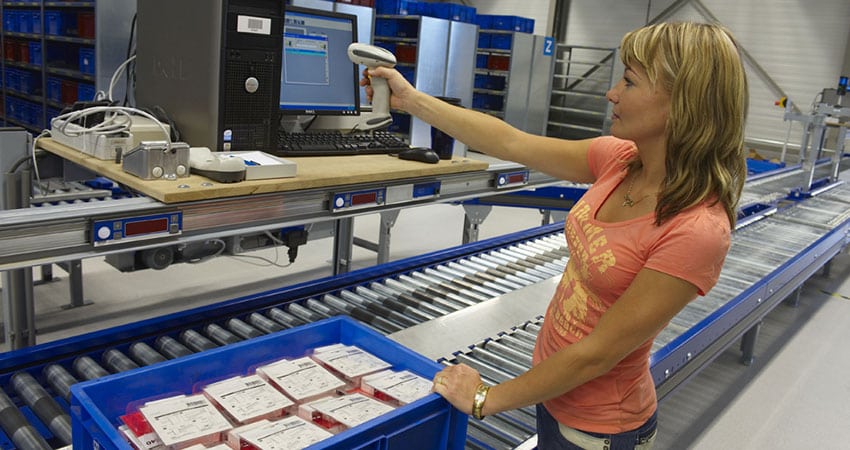The growth of ecommerce startups and emerging companies (under $5 million in sales) has been amazing over recent years. As we work with them, successful direct-to-customer businesses learn quickly how to provide good customer service at the lowest possible costs.
It’s important to note that it often takes three to four years to reach financial break-even for the business. Here are five imperatives emerging companies need to focus on in order to establish timely and efficient direct-to-customer fulfillment processes.
Understand Fulfillment Costs Per Order
To compare direct-to-customer fulfillment costs between companies we have historically excluded outbound shipping and employee benefits as these vary widely and distort comparisons. These fulfillment center costs comprise 98% of all expenses:
- Indirect labor: hourly employees for all departments (receiving, quality, put away, replenishment, pick, pack and ship)
- Direct labor: supervisors and managers
- Shipping supplies: including envelopes, cartons, dunnage etc.
- Occupancy: space and utilities
Excluding outbound freight and employee benefits, the fully loaded cost per order for efficient medium-to-large companies is $3 to $5. Small companies often don’t know their cost per order. For emerging companies, it can easily reach $10 as they’re often not as focused on production costs and controlling costs as larger businesses.
For most businesses, the cost of outbound shipping is larger than the sum of the fulfillment expenses listed above, often at 8% to 10% of sales. For heavier items affected by dimensional weight pricing from the major carriers, it can be much higher.
Using your accounting data, organize your expenses each quarter into the major categories above. Then from your order processing system for same period, use the order count and the carton count to calculate the cost per order, carton and percent to net sales. Over the next year, assess how can these costs be reduced and customer service improved.
Personnel
Until sales volume justifies it, build a temporary staff that can flex with sales volumes and hire a full-time manager to oversee fulfillment. Hourly wage rates will vary depending on your market and the available of people. With low unemployment as is currently the case, hourly employees earn $12 to $15 per hour. Benefits can add typically 15% to 20% to personnel costs. Personnel expenses will be more than 50% of your fulfillment costs.
Inventory Management
Inventory is typically the largest balance sheet asset in your business. Whether your ecommerce business gets the order depends on product availability, and getting orders to customers in seven days or less. Don’t hold slow-selling product; cut the retail price at least 30% to recover as much product cost early as possible.
Additionally, emerging ecommerce companies often rely on vendor drop shipping to handle slower selling SKUs. The downside is that fulfillment may be slower and you may not have online customer service data about orders.
As early on as you can, hire someone who understands the steps involved with planning, purchasing, forecasting and managing inventory.
Business Systems
Many emerging companies start with Fulfillment by Amazon (FBA). As they establish their own direct-to-customer fulfillment, they acquire small-scale enterprise-wide systems or accounting systems with order processing, credit authorization, inventory management, some warehouse processing and accounting functions. Additionally, many use contract programmers to develop a small system or help interface commercial and homegrown code.
The unfortunate thing is that many emerging businesses go through two or three different commercial platforms before they feel they have a scalable, stable order management or ERP system with key direct customer service, warehousing, inventory and some marketing functions. System price rather than direct function is often the selection criteria.
Software as a Service (SaaS) may also be a better financial option for you. With SaaS you pay for system use based on a transactional fee or a monthly fee tied to volume. The imperative is to select and implement an affordable system with scalability and direct-to-customer fulfillment functionality that can meet your needs for five to 10 years.
Evaluate a 3PL Option
Rather than developing internal direct-to-customer fulfillment, contract with a logistics firm that specializes in direct customer fulfillment. This is not for every company but we know it is cost effective and a good customer service option. It eliminates staffing issues and space needs, provides an order processing system and saves on capital expenditures.
Implementing these imperatives in the first couple years after your company’s launch will help get you to break-even quicker while also providing a great customer experience.
Brian Barry is President of F. Curtis Barry & Company

